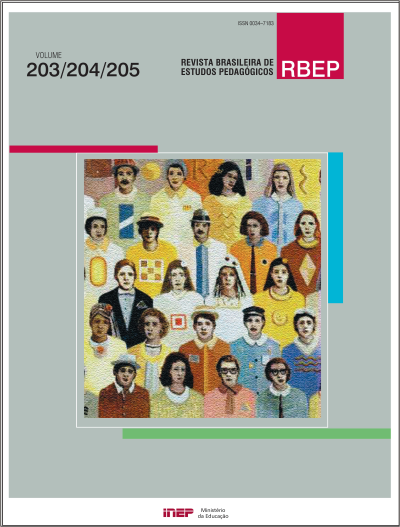Governo Fernando Henrique Cardoso e o Programa “Toda Criança na Escola”: a fragilidade das estatísticas oficiais
Resumo
Examina a evolução das matrículas nacionais no ensino fundamental regular de 1997 a 2002, no período do governo Fernando Henrique Cardoso, e constata que o seu crescimento deve-se, em grande parte, à inclusão nelas de matrículas que em 1997 eram de classes de alfabetização (cerca de 785 mil), de educação de jovens e adultos (cerca de 100 mil) e do setor privado (cerca de 400 mil). Assim, das 2,3 milhões de matrículas formalmente novas no ensino fundamental regular em 1999 (na comparação com 1997), cerca de 1,3 milhão não representaria acréscimo real. Este "remanejamento" explica-se provavelmente pelo fato de as matrículas no ensino fundamental regular representarem um potencial de receita do Fundo de Manutenção e Desenvolvimento do Ensino Fundamental e de Valorização do Magistério (Fundef), que não beneficia outros níveis e modalidades de ensino. Se descontarmos essas matrículas "remanejadas", o número de matrículas novas no EFR cai para 947 mil, fragilizando assim a campanha federal "Toda criança na escola", ao não cumprir a meta de matricular as 2,7 milhões de crianças de 7 a 14 anos que estariam fora da escola em 1997, segundo estimativa do MEC. O estudo registra também a forte transferência de 3,2 milhões de matrículas do ensino fundamental regular das redes estaduais para as municipais, no processo conhecido como municipalização, bem como a supressão de cerca de 800 mil matrículas estaduais neste nível (sobretudo em São Paulo e Minas). Por fim, ressalta-se a dificuldade de comparabilidade e confiabilidade das estatísticas educacionais. Palavras-chave: estatística educacional; política educacional; ensino fundamental regular; sistemas de ensino. Abstract The article examines the changes in Brazilian basic education enrolments between 1997 and 2002 and finds that their increase is largely due to the inclusion in them of enrolments which until 1997, during Fernando Henrique Cadoso's government, were included in other levels of schooling, such as literacy classes (about 785 thousand of which were included in basic education enrolments), schooling for youngsters and adults who did not attend schooling at the appropriate age (about 100 thousand enrolments) and fee-paying schools (about 400 thousand). Thus, of the formally new 2.3 million enrolments in basic education in 1999 (as compared to 1997), about 1.3 million do not represent a real increase. Such "rearrangement" is probably due do the fact that basic education enrolments bring an extra revenue from Fundef (a Fund for the Maintenance and Development of Basic Education and Valorization of Teaching Personnel), which, however, does not benefit other levels and types of education. If we exclude such "rearranged" enrolments, the number of actual new enrolments in basic education falls to 947 thousand, thus weakening the federal campaign "All children in school", which promised to enroll 2.7 million children between the age of 7 to 14 not attending school in 1997, according to an estimate by the Brazilian Ministry of Education. The study also indicates the huge transfer of 3.2 million basic education enrolments from State to municipal governments, in a process known as "municipalization", as well as the elimination of over 800 thousand basic education enrolments in State government schools (particularly in the States of São Paulo and Minas Gerais). Finally, the difficulties of comparability and reliability of educational statistics are pointed out. Keywords: educational statistics; educational policy; basic education; educational systems.Downloads
Não há dados estatísticos.
Publicado
01-12-2002
Como Citar
DAVIES, N. Governo Fernando Henrique Cardoso e o Programa “Toda Criança na Escola”: a fragilidade das estatísticas oficiais. Revista Brasileira de Estudos Pedagógicos, v. 83, n. 203-04-05, 1 dez. 2002.
Edição
Seção
Estudos
A aceitação do artigo implica automaticamente a cessão de seus direitos autorais ao Instituto Nacional de Estudos e Pesquisas Educacionais Anísio Teixeira (Inep).
A Revista Brasileira de Estudos Pedagógicos adota, desde 2016, a licença CC-BY.
A reprodução total ou parcial dos artigos da Revista é permitida desde que citada a fonte de publicação original e o link para a licença CC BY 4.0 e que sejam indicadas eventuais alterações no texto.




















